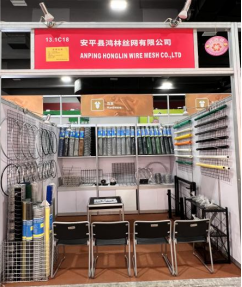Electric Chicken Fencing Solutions - Safe & Effective Poultry Protection
The Rise of Electric Chicken Fencing A Practical Solution for Poultry Farmers
In the world of poultry farming, protecting chickens from predators is a primary concern. With free-range chickens becoming increasingly popular, farmers are seeking effective solutions to keep their flocks safe from threats such as foxes, raccoons, and hawks. Electric chicken fencing has emerged as a popular choice, providing farmers with both security and peace of mind.
Electric chicken fencing consists of a series of lightweight, easy-to-install fencing materials that deliver a mild electric shock when touched by an animal. This phenomenon serves two primary functions it acts as a deterrent for potential predators and helps contain the chickens within a designated area. As the poultry industry continues to evolve, the demand for efficient and humane fencing solutions has led to the increased adoption of electric fencing.
One of the significant advantages of electric chicken fencing is its ease of installation. Unlike traditional fencing, which can require substantial time and labor to erect, electric fencing can be set up quickly, often within a few hours. Most products come with simple instructions, and many farmers can handle the installation themselves without needing professional assistance. Additionally, the portable nature of electric fencing allows farmers to easily adjust the perimeter as needed, whether to expand their flock’s range or relocate the enclosure for pasture rotation.
Moreover, electric chicken fencing is cost-effective. While the initial investment may be higher than traditional fencing materials, the long-term savings can be significant. Electric fencing tends to require less maintenance, and the need for repairs is minimal. Farmers also benefit from the fact that electric fencing can protect flocks on various terrains, including hilly or uneven ground, where conventional fencing might struggle.
electric chicken fencing

From an environmental standpoint, electric fencing offers a more sustainable solution. With the increasing importance of eco-friendly farming practices, farmers can feel good about using a method that reduces the need for chemical deterrents or harmful traps. Electric fencing engages only the intended target, making it a humane choice that minimizes suffering for both chickens and predators.
Safety is always a key consideration for farmers. Electric chicken fencing is designed to deliver a brief, low-voltage shock that effectively deters predators without causing harm. This aspect is particularly important for those who prioritize animal welfare in their farming practices. Additionally, many systems allow farmers to adjust the voltage settings based on their specific needs, catering to the types of predators they may encounter.
As more farmers adopt electric chicken fencing, the technology continues to evolve. New designs feature solar-powered options or enhanced battery life, further improving the convenience and sustainability of their use. With improvements in materials, efficiency, and accessibility, it’s likely that electric chicken fencing will play a pivotal role in the future of poultry farming.
In conclusion, electric chicken fencing presents a innovative answer to the age-old problem of protecting chickens from predators. Its combination of ease of use, cost-effectiveness, and humane deterrent methods makes it an attractive option for poultry farmers seeking to safeguard their flocks. As the industry moves towards more sustainable practices, electric fencing stands out as a viable solution in the quest for both productivity and animal welfare. For those in the poultry farming community, embracing electric chicken fencing may just be the key to ensuring a healthy and secure environment for their birds.
-
Successful Participation at the 137th Canton Fair in April 2025NewsApr.20,2025
-
Successful Participation at the 2025 NAHB International Builders' Show (IBS) in Las VegasNewsFeb.28,2025
-
Successful Participation at the 2025 Philippine World Building and Construction Exposition (WorldBex) in ManilaNewsMar.20,2024
-
Successful Participation at the 2024 Canton FairsNewsOct.20,2024
-
Successful Participation at the 2024 Canton FairNewsApr.20,2024
-
Successful Participation at the 2024 Philippine World Building and Construction Exposition in ManilaNewsMar.20,2024




